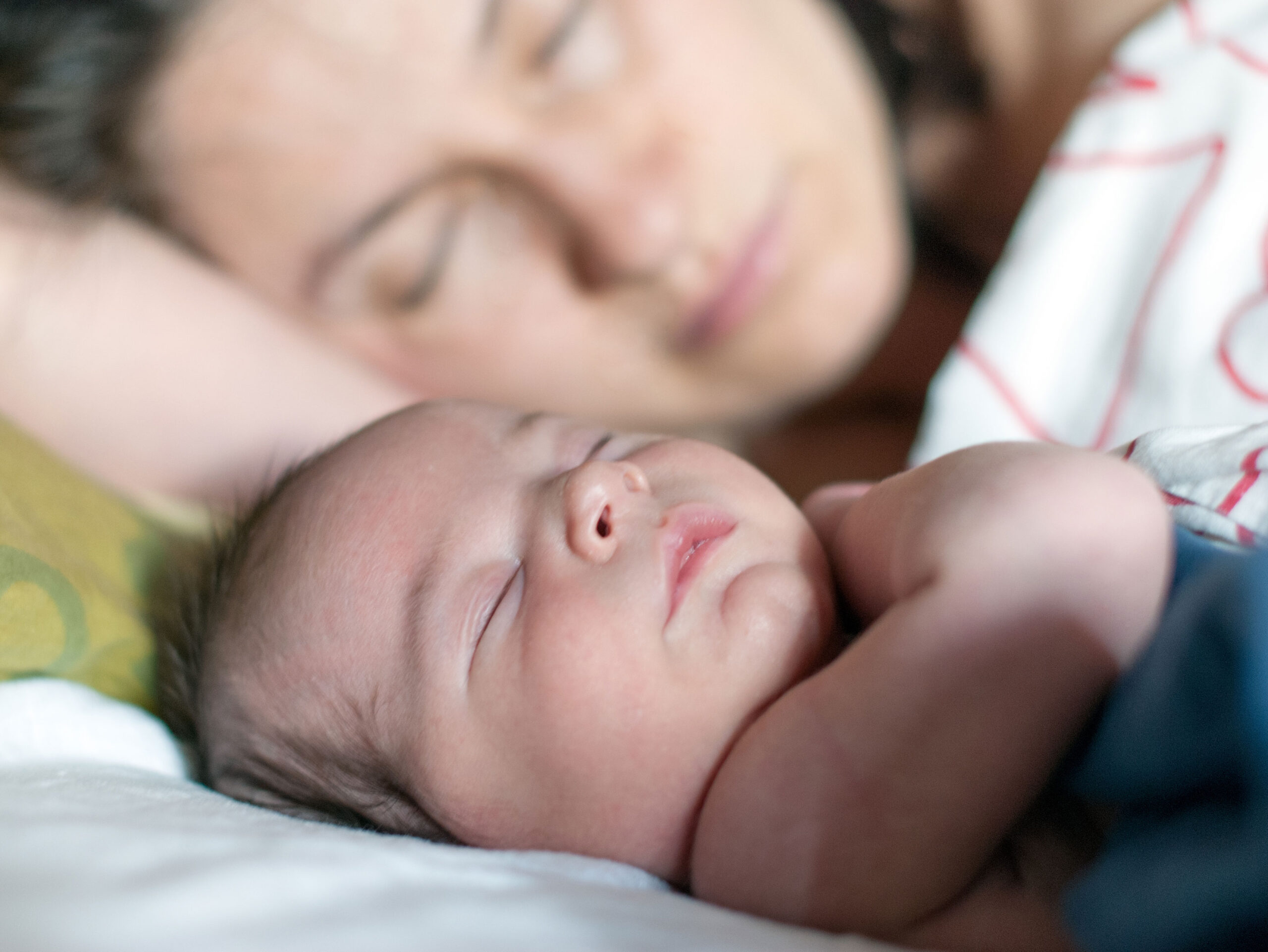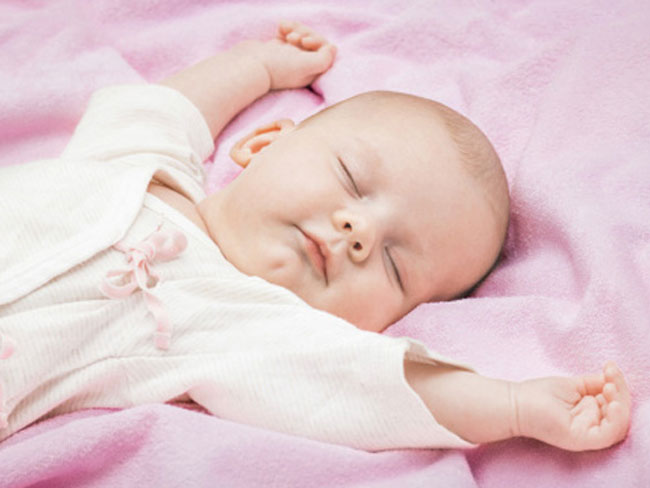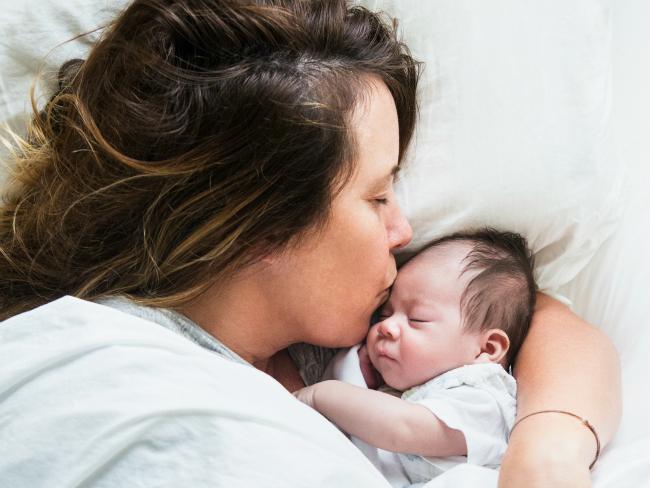Parents are ignoring safe sleeping guidelines and putting their children at increased risk of SIDS in order to prevent flat head syndrome, a new study has found.
Over 100 parents were interviewed by health professionals about flat head syndrome to test their knowledge on its causes and effects. The researchers discovered that many parents were going against SIDS guidelines to prevent their baby from getting a flat head– a possibility if a baby consistently sleeps with its head in the same spot.
Associate Professor Alexandra Martiniuk, from Sydney’s George Institute for Global Health, said the findings were worrisome.
“Parents were very aware of SIDS guidelines and they want to do the best for their child, of course, it’s their baby,” Associate Professor Martiniuk told the ABC.
“But they actually choose to ignore some of these SIDS guidelines because they thought flat head was a more of a reality for them.”
The study found that many parents were rolling up towels and putting them under mattresses to ensure their babies did not sleep with their head in the same position for extended periods of time.
“But, of course, these sorts of practices are quite dangerous because then they create a sleep environment that isn’t safe,” Martiniuk told the ABC.
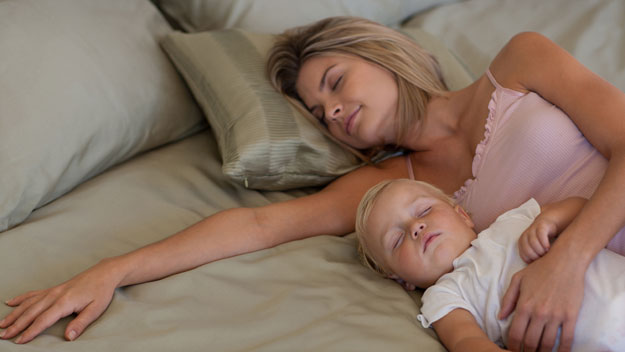
Precautions to take when putting your baby to sleep
The tragedy of SIDS is something that strikes fear into the heart of every parent, but there are some simple sleep practices that have been proven to help reduce the risks for your baby.
SIDS (also known as cot death) and fatal sleeping accidents remain the most common causes of sudden and unexpected deaths of infants between one month and one year of age.
Thanks to awareness-raising initiatives such as the SIDS and Kids Safe Sleeping program, there’s been an 80 per cent reduction in the number of SIDS-related deaths since 1988.
The program’s guidelines are based on scientific evidence and were developed by Australian researchers, paediatricians, pathologists and parents with input from overseas experts in the field.
Research is ongoing into the causes of SIDS and definitive answers are yet to be found, but here are six precautions to take when putting your baby to sleep.
1. Put baby to sleep on their back from birth, not on the tummy or side. If your baby suffers from reflux or is developing a misshapen or flat head (positional plagiocephaly), back sleeping is still recommended but consult your doctor or the www.sidsandkids.org site for advice.
2. Sleep baby with head and face uncovered. Bedding should not include pillows, doonas, duvets, quilts or cot bumpers, and no stuffed toys before the age of seven months.
According to SIDS and Kids CEO Leanne Raven, “In 2005, the NSW Child Death Review Team reported that almost 60 per cent of babies who died of SIDS were found with their heads or faces covered at the time of death.” Death was attributed to subsequent blocking of airways and overheating.
3. Keep baby smoke-free before and after birth. Don’t let anyone smoke around your baby – and don’t allow smokers near the nursery or near windows or vents that lead to it.
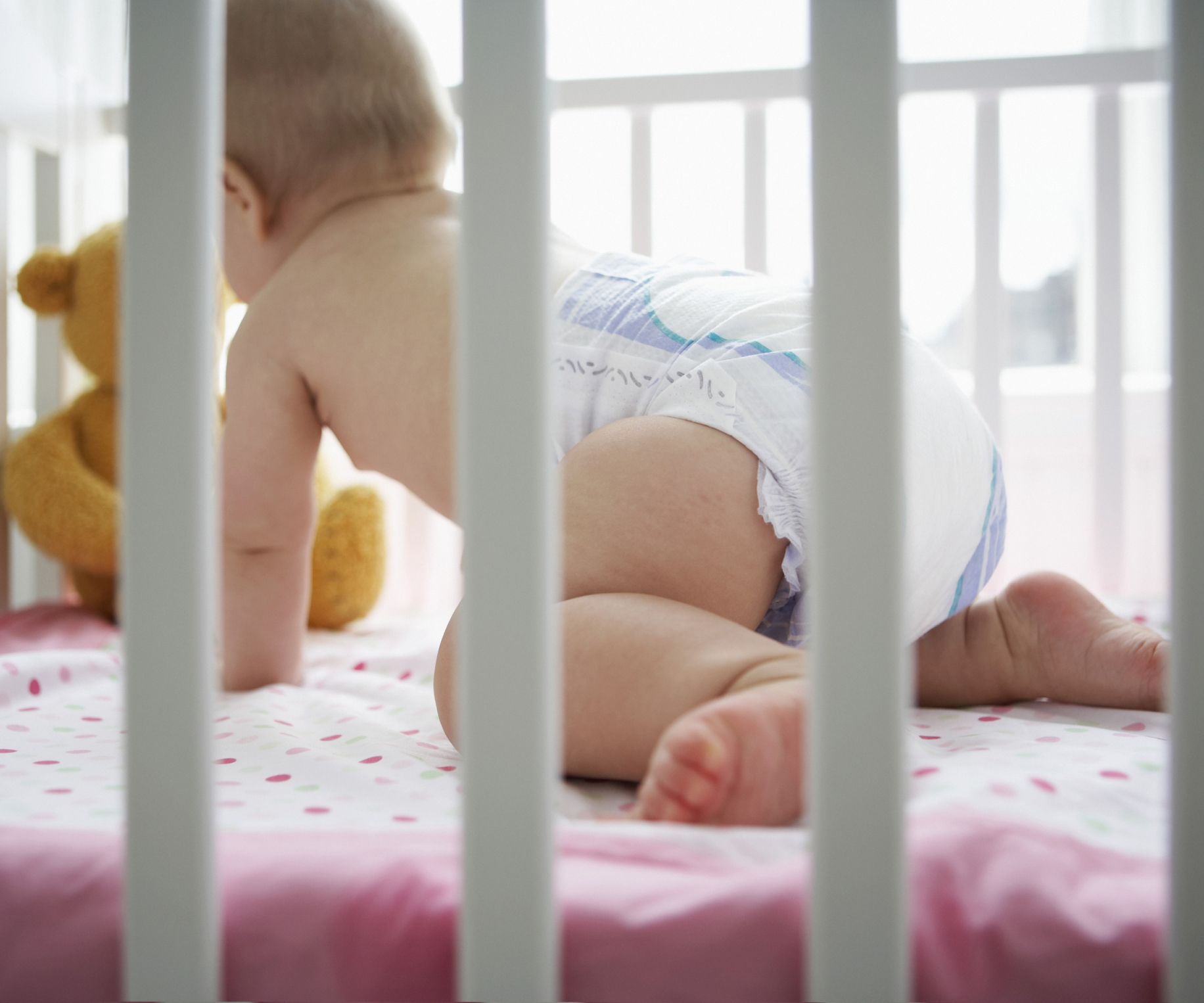
4. Provide a safe sleeping environment, for night and day sleeps – this is defined as a safe cot, on a safe mattress with safe bedding. In April 2013, Standards Australia and Standards New Zealand introduced a new, world-first, voluntary standard for all infant sleep surfaces to reduce the likelihood of death or injury to babies.
According to Dr Ron Somers, who helped develop the new standard, “A baby sleeping on a surface that is too soft has more than five times the chance of dying from sudden infant death than one sleeping on a surface tested to this new Australian standard.”
5. Sleep baby in their own safe sleeping place/cot but in the same room as an adult carer for the first six to 12 months. The benefits of room-sharing include the ability to respond rapidly to a baby’s needs, more convenient settling and closer mother-baby contact.
“Several studies have shown that when a committed caregiver sleeps in the same room, but not the same bed with their baby, the chance of the baby dying from SIDS is reduced by up to 50 per cent when compared to babies sleeping in a separate bedroom,“ says Raven.
6. Breastfeed if you can. Research is ongoing as both breast- and bottle-fed babies have died from SIDS, but there is strong evidence to suggest that breastfeeding reduces the risk of SIDS.
Since 1988, SIDS and Kids has helped save an estimated 7,500 babies’ lives through education and community awareness programs such as the Safe Sleeping campaign.
Thanks to fundraising initiatives such as Red Nose Day, more than $16 million has been devoted to researching the causes of stillbirth and SIDS and find answers for parents. Over 3500 families still experience the sudden and unexpected death of a baby or child in Australia each year.
SIDS and Kids provides bereavement support to those affected by the death of a baby or child, and receives more than 10,000 calls for help every year via its 24-hour hotline 1300 308 307.
